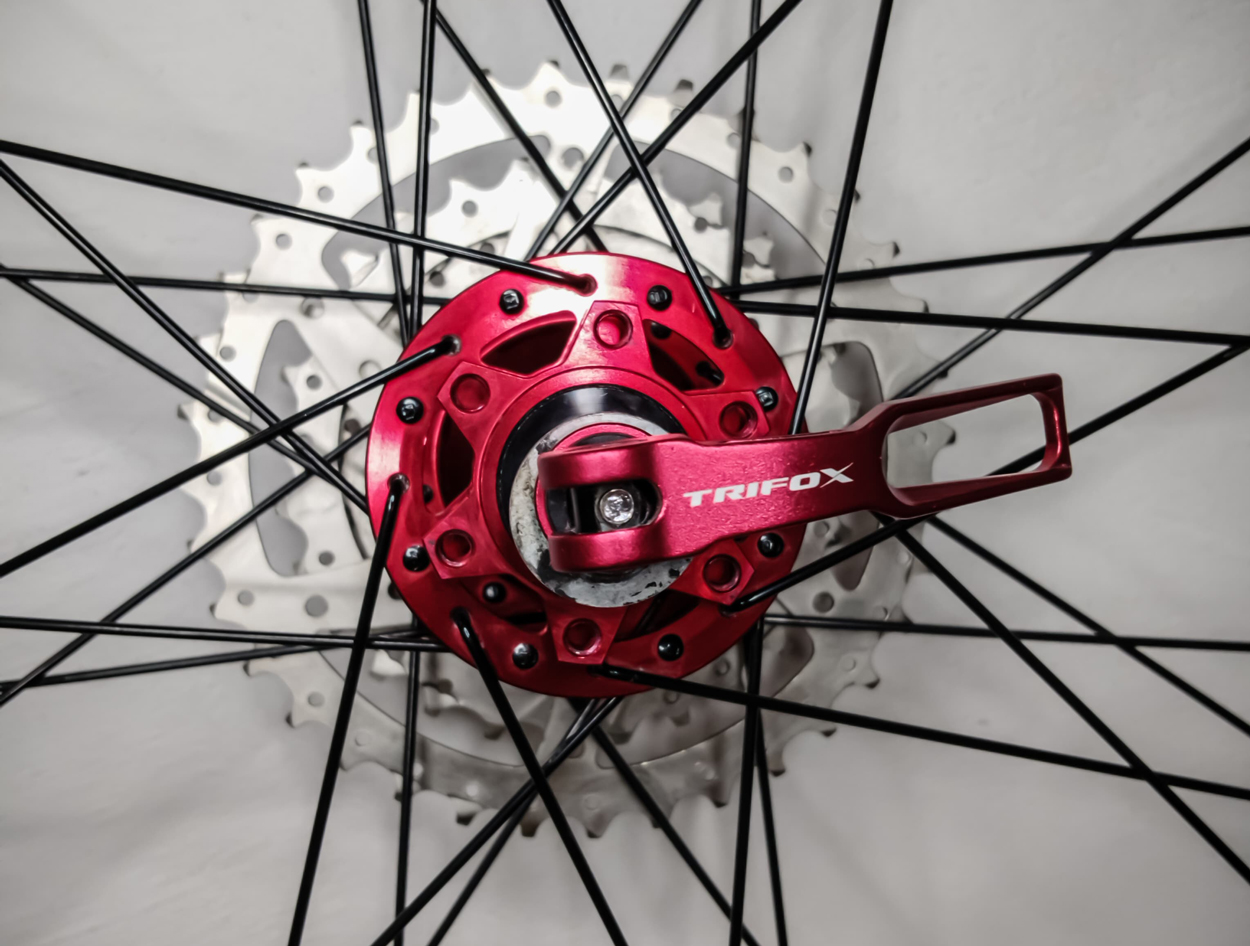
When it comes to cycling, many riders focus on components like the frame, gears, or brakes, often overlooking one of the most critical elements of a bike: the spokes. These slender, often underappreciated parts play a vital role in ensuring a smooth, safe, and efficient ride. Without properly functioning spokes, your bike’s performance would suffer, and your safety could be compromised. Here’s why bike spokes are so crucial to your ride. The Role of Spokes in Wheel Structure Spokes are the thin metal rods that connect the hub (the center of the wheel) to the rim. Their primary function is to distribute the weight of the rider and the bike evenly across the wheel. This distribution is essential for maintaining the wheel’s shape and strength, especially when encountering bumps, potholes, or other obstacles. Without spokes, the rim would collapse under pressure, making the bike unrideable. Spokes also help absorb shocks and vibrations from the road. When you hit a bump, the spokes flex slightly, reducing the impact on the rider and preventing damage to the wheel. This flexibility is key to maintaining a comfortable ride, particularly on rough terrain. Strength and Durability A well-built wheel with properly tensioned spokes is incredibly strong. Spokes work together to create a tensioned structure that can withstand significant forces. This is why even lightweight wheels can support heavy loads without buckling. However, if one or more spokes are loose, broken, or improperly tensioned, the wheel becomes unbalanced, leading to wobbling, reduced efficiency, and even potential failure. Regular maintenance of your spokes is essential to ensure their longevity and performance. Over time, spokes can loosen due to constant stress and vibration. Periodic checks and adjustments by a professional can prevent issues like spoke fatigue or wheel misalignment, which could otherwise lead to costly repairs or accidents. Impact on Ride Quality Spokes directly influence the ride quality of your bike. A wheel with evenly tensioned spokes rolls smoothly, reducing friction and improving efficiency. This means you can ride faster and with less effort. On the other hand, a wheel with loose or uneven spokes can cause wobbling, making the bike harder to control and increasing the risk of accidents. Additionally, spokes contribute to the overall weight of the bike. High-quality spokes made from materials like stainless steel or carbon fiber are lightweight yet strong, enhancing the bike’s performance without compromising durability. For competitive cyclists, every gram counts, and optimizing spoke quality can make a significant difference in speed and agility. Safety Considerations Broken or damaged spokes can compromise your safety. A single broken spoke can throw the wheel out of balance, causing it to rub against the brake pads or frame. This not only makes the bike harder to ride but also increases the risk of a sudden wheel failure, which could lead to a crash. Regularly inspecting your spokes for damage and addressing issues promptly is crucial for maintaining a safe ride. While bike spokes may seem like a small and insignificant part of your bicycle, they are, in fact, fundamental to its performance, durability, and safety. From maintaining the wheel’s structure to absorbing shocks and ensuring a smooth ride, spokes play a critical role in your cycling experience. By paying attention to their condition and ensuring proper maintenance, you can enjoy a safer, more efficient, and more enjoyable ride. So, the next time you hop on your bike, take a moment to appreciate the humble spoke—it’s working hard to keep you rolling!
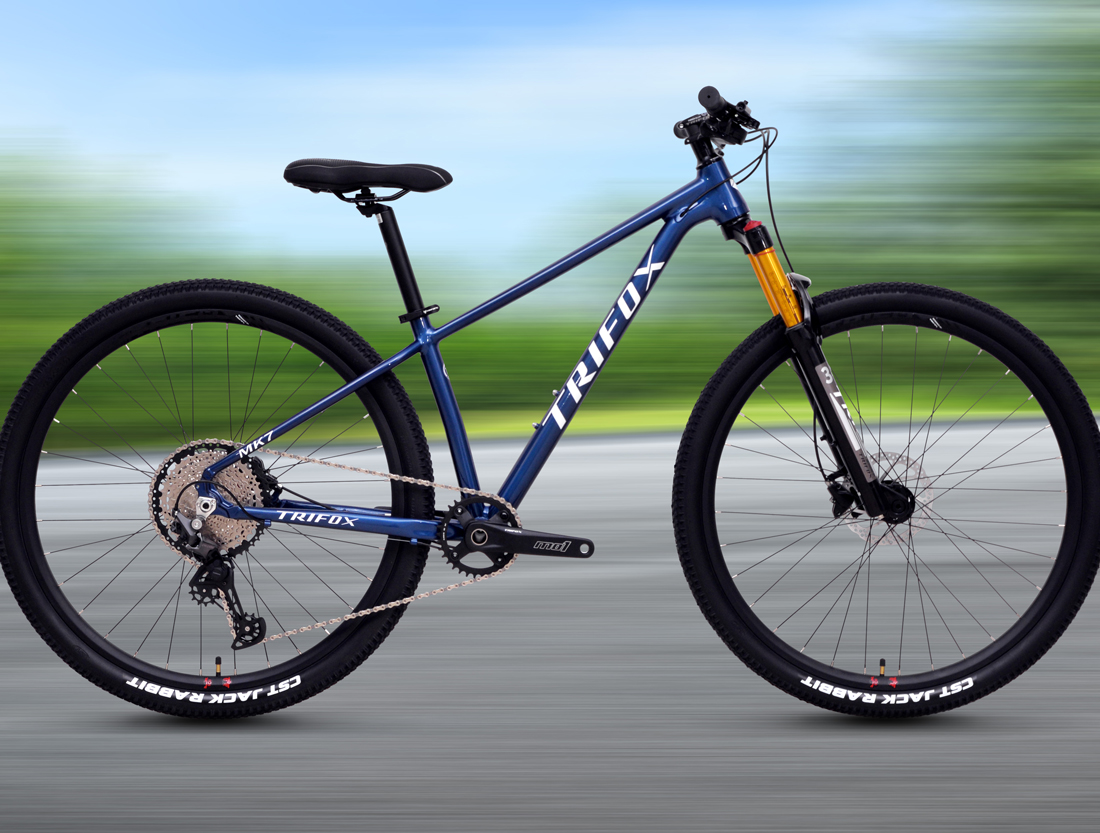
When it comes to choosing the right bicycle frame, two materials dominate the conversation: carbon fiber and aluminum. Each offers distinct advantages, so the decision often depends on your riding style, budget, and performance goals. At Trifox, we specialize in both carbon and aluminum frames, ensuring that you have the perfect bike for your needs. Let's dive into the key differences between these two materials. Carbon Fiber Frames: Lightweight & High Performance Carbon fiber frames are renowned for their lightweight properties and superior performance. The material’s high strength-to-weight ratio allows for more efficient power transfer, which means you can accelerate faster and ride longer without feeling weighed down. Carbon also absorbs vibrations from the road or trail, offering a smoother, more comfortable ride. However, carbon frames come with a higher price tag due to their advanced manufacturing process and performance benefits. They are also less durable when exposed to significant impact or crashes, though their lightweight and ride quality often make them the preferred choice for competitive cyclists and long-distance riders. Aluminum Frames: Durable & Affordable Aluminum frames are known for their durability and cost-effectiveness. They are heavier than carbon but still relatively lightweight, making them a great option for riders who want solid performance at a more affordable price point. Aluminum is also more resistant to impact damage, making it a popular choice for rugged terrains and beginners. While aluminum doesn't offer the same level of vibration damping as carbon, it is still a reliable material that provides excellent strength and longevity at a lower cost. Which Should You Choose? If you prioritize high performance, a lightweight feel, and a smooth ride, a carbon frame is the way to go. On the other hand, if you're looking for durability, affordability, and versatility, an aluminum frame offers great value without compromising too much on performance. At [Trifox Official Website], we offer both carbon and aluminum frames, allowing you to choose the best option for your cycling needs.
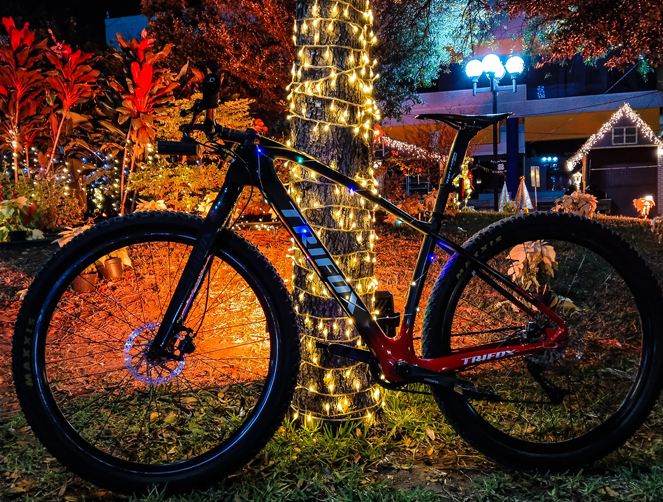
Mountain biking on tough, rugged trails can be a thrilling challenge, but it requires the right bike and technique to get the most out of every ride. If you're riding a Hardtail MTB M2 Bike, you're already ahead of the game. The Trifox M2 Bike, a hardtail mountain bike with a lightweight carbon frame, is designed to handle tough trails with ease, offering the perfect combination of speed, agility, and performance. However, to fully maximize the potential of your hardtail MTB on challenging terrain, there are a few key strategies and tips you can follow. 1. Optimize Your Tire Pressure for Better Traction When riding on tough trails, tire pressure plays a critical role in maximizing traction and ensuring a smooth ride. Too much pressure can lead to less grip and a harsher ride, especially when hitting rocks, roots, and uneven surfaces. On the other hand, too little pressure may cause your tires to squish, increasing the chances of a pinch flat. For the Trifox Hardtail MTB M2 Bike, consider running slightly lower tire pressure for better grip on rough trails. Typically, the ideal pressure range for mountain bike tires is between 30-40 PSI, but this can vary based on your weight, riding style, and trail conditions. Lower pressure allows your tires to conform to the terrain, increasing the surface area in contact with the ground and improving traction, especially on loose dirt, gravel, and wet conditions. Remember to check your tire pressure before each ride, especially on tougher terrain, as it can significantly impact your ride quality and control. 2. Set Up Your Suspension for Performance Although the Hardtail MTB M2 Bike is a hardtail, meaning it doesn’t have rear suspension, it’s still crucial to fine-tune your front suspension fork for maximum performance. The front suspension is the primary shock absorber on a hardtail, and adjusting it properly can make a world of difference when tackling rough trails. For tougher trails, you’ll want to adjust the rebound damping and compression settings of your front suspension. If you're encountering a lot of rough, rocky terrain, a slightly higher rebound setting will allow the suspension to recover faster between bumps, giving you more control on the trail. Similarly, the compression settings can be adjusted to match the trail conditions—more compression for aggressive, technical riding or less compression for smoother trails. The Trifox M2 Bike features a high-quality suspension fork, so take the time to experiment with different settings until you find the optimal balance for your riding style and the type of trails you frequent. Fine-tuning the suspension will help improve both comfort and control. 3. Master Your Riding Technique on Tough Terrain While your Hardtail MTB M2 Bike is built for speed and control, how you ride it on tough trails makes a huge difference in your performance. Here are some key tips for riding efficiently on rough terrain: Stay Loose and Relaxed: When riding over technical sections like rocks, roots, and drops, it’s important to stay loose on the bike. This means keeping your elbows and knees slightly bent, absorbing bumps with your body, and letting the bike move beneath you. Tensing up can cause unnecessary fatigue and reduce your control on the trail. Choose Your Lines Wisely: On tough trails, you’ll need to pick the best line through obstacles to avoid unnecessary jarring impacts. Look ahead and plan your path, aiming for smoother sections of the trail while avoiding larger rocks and roots when possible. Keep Your Pedal Stroke Smooth: Hardtail bikes require a smoother pedal stroke, especially when climbing or riding over uneven terrain. On rocky or uphill sections, try to maintain a consistent rhythm with your pedaling to avoid jarring stops or stalls. 4. Use Your Brakes Strategically Braking is an essential skill when navigating tough trails. On a Hardtail MTB M2 Bike, you don’t have the rear suspension to help absorb the shock when you brake hard, so it’s important to use your brakes efficiently to avoid losing control. For technical sections or steep descents, use both brakes evenly and focus on modulating them to control your speed. Avoid slamming on the brakes, especially in slippery or loose conditions, as this can cause you to lose traction and control. Instead, apply steady, controlled braking, and focus on using the front brake to slow down gradually, while the rear brake helps with stability. 5. Maintain Your Hardtail MTB M2 Bike Regularly A key part of getting the most out of your Hardtail MTB M2 Bike is regular maintenance. A well-maintained bike will perform better and last longer, especially when it’s being subjected to the rigors of tough trails. Here are a few maintenance tips to keep your bike in peak condition: Check your chain and drivetrain regularly for wear and tear, as rough trails can put additional strain on these components.Inspect your tires for cuts, punctures, and proper pressure. Worn-out tires can significantly reduce your traction on tough terrain.Lubricate the suspension fork to ensure it moves smoothly and absorbs shocks effectively. 6. Embrace the Hardtail Experience Lastly, remember that riding a hardtail like the Trifox Hardtail MTB M2 Bike requires a different approach compared to full-suspension bikes. While full-suspension bikes provide more comfort on rough trails, hardtails like the M2 offer increased efficiency, lighter weight, and better pedaling performance. Embrace the challenge of the hardtail design, and use the bike’s responsiveness to your advantage on smooth sections, climbs, and sprints. Conclusion The Hardtail MTB M2 Bike is a fantastic choice for mountain bikers who want to conquer tough trails with efficiency and speed. By optimizing your tire pressure, fine-tuning your suspension, mastering riding techniques, and performing regular maintenance, you can get the most out of your hardtail and enjoy a smoother, more controlled ride on even the most challenging terrain. Whether you're navigating rocky descents, sharp turns, or steep climbs, your Hardtail MTB M2 Bike will help you ride with confidence and performance on tough trails.
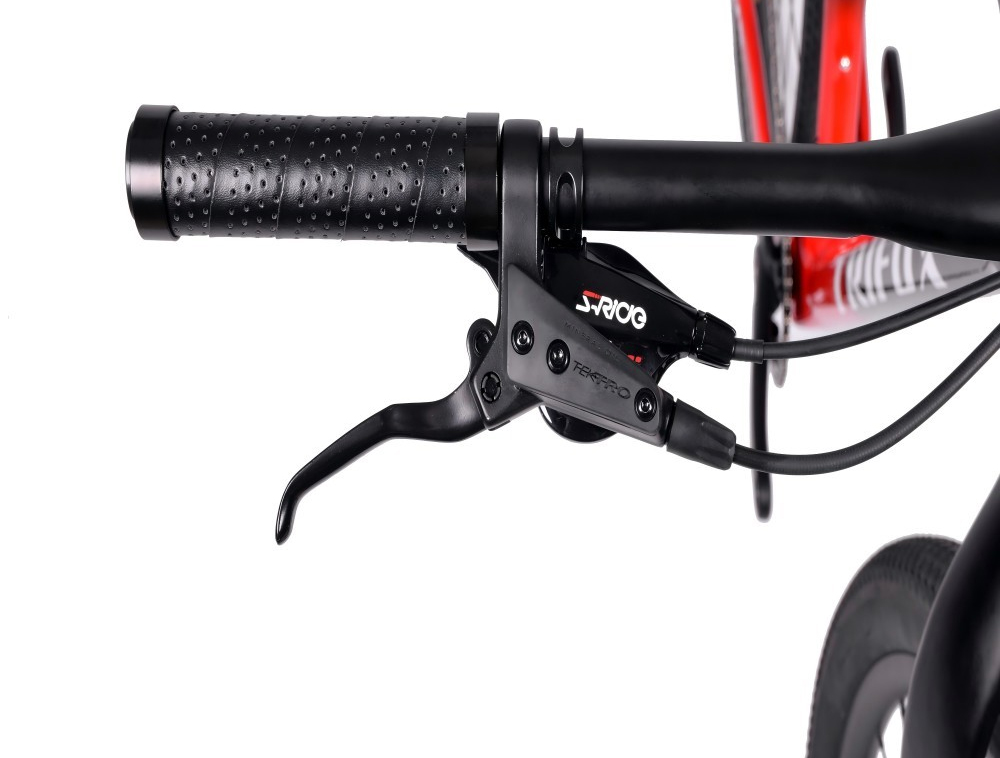
When tackling rough, rugged terrain on your mountain bike (MTB), control and comfort are paramount. The key to maintaining both lies in the often-overlooked component of your bike: the MTB grips. While they may seem like a small detail, the right grips can significantly enhance your riding experience, particularly when navigating challenging trails, rocky paths, and steep inclines. 1. Improved Grip and Stability One of the primary functions of MTB grips is to offer a secure hold on the handlebars, especially in rough conditions. When you're riding on uneven trails, your hands can easily slip if your grips aren't designed to provide enough traction. This can be dangerous, particularly when riding downhill or over obstacles, as a lack of control can lead to accidents. The Trifox MTB Handlebar Grip (MBT100), for example, is specifically designed to provide a non-slip surface that allows you to maintain a firm grip in all weather conditions, whether it’s wet, dry, or muddy. The textured surface and ergonomic design of these grips reduce the chances of your hands sliding, helping you stay in control even during the most aggressive rides. 2. Enhanced Comfort for Long Rides Riding on rough terrain can be physically demanding, and if your grips are too thin or hard, they can cause hand fatigue and discomfort. Over time, the constant vibrations from bumps, rocks, and roots can lead to numbness or soreness in your hands and wrists. This is where the right MTB grips come in—designed with padding or vibration-damping materials, they can absorb much of the shock, making long rides much more comfortable. Grips like the Trifox MTB Grips feature soft rubber compounds and ergonomic shapes that distribute pressure evenly across your palms and fingers. This cushioning effect reduces the vibrations that travel up your arms, minimizing hand fatigue and discomfort, and allowing you to ride longer without feeling the effects of rough terrain. With proper MTB grips, you can enjoy greater comfort and focus on your ride, not on the pain in your hands. 3. Increased Control Over Technical Sections On technical trails, where sharp turns, drops, and obstacles are common, the ability to control your bike is crucial. Grips with a solid, ergonomic design give you greater leverage and precision when navigating tight corners, steep descents, and obstacles like rocks and roots. When your hands are comfortable and securely positioned, you can apply better force to the handlebars, improving your control over the bike. The Trifox MTB Grips (MBT100) are designed with a dual-density grip pattern, ensuring a high level of traction without being overly aggressive, which allows for smooth handling of technical sections while maintaining comfort. This enhanced control is particularly valuable when riding in areas with loose gravel or mud, where stability is essential for safe, efficient riding. 4. Reduced Hand Fatigue with Ergonomic Features In addition to cushioning and vibration dampening, many MTB grips incorporate ergonomic features that target specific areas of the hand, such as the palm and the thumb. By contoured designs or soft ridges that fit the natural shape of your hand, these grips reduce pressure on key areas, leading to less fatigue over long rides. This is especially important when riding on rough terrain, where you need to maintain a strong grip without tiring quickly. The Trifox MTB Grips are ergonomically shaped to fit the contours of your hands, ensuring that even on the most technical trails, you can maintain a comfortable grip. Their thoughtful design also allows for natural hand movements, so you won’t have to overexert yourself to keep a steady hold on the bars. 5. Better Shock Absorption for Rough Terrain As you navigate rough terrain, the shocks from bumps and jumps can reverberate through your bike’s frame, sending vibrations directly into your hands and arms. MTB grips designed with shock-absorbing materials can mitigate these impacts, ensuring a smoother ride. Foam or gel inserts, for example, can cushion these shocks and reduce the vibrations that could otherwise lead to discomfort or long-term injury. With the Trifox MTB Grips, the high-quality material composition and shock-absorbing properties help reduce the impact of trail obstacles on your hands and wrists, providing additional comfort and control. This feature is particularly helpful on longer rides, where continuous vibrations could otherwise wear you down. 6. Customization for a Personalized Ride MTB grips come in a variety of shapes, sizes, and materials, which means you can find a pair that suits your personal riding style and comfort needs. Whether you prefer thicker grips for more cushioning or thinner ones for better feedback, customizing your grips allows you to tailor your bike setup to your preferences. Additionally, grips come in different colors and designs, so you can choose a set that matches your bike’s aesthetics. The Trifox MTB Grips offer several options for riders to personalize their setup, allowing for maximum comfort and a performance-oriented design that fits your needs on the trail. With a wide range of designs and materials to choose from, you can find the perfect grips to complement your mountain biking style. When riding on rough terrain, MTB grips play a crucial role in ensuring that you maintain control, comfort, and performance. With the right grips, you can improve your handling, reduce hand fatigue, and ride longer and harder without sacrificing comfort. The Trifox MTB Handlebar Grip (MBT100) is a perfect example of how quality grips can enhance your experience on technical trails, providing excellent traction, shock absorption, and ergonomic comfort. If you're looking to take your mountain biking to the next level, investing in high-quality MTB grips is a smart choice. They might seem like a small detail, but the difference they can make to your control, comfort, and overall performance is anything but insignificant. Choose the right grips, and you’ll be ready to conquer any trail that comes your way.
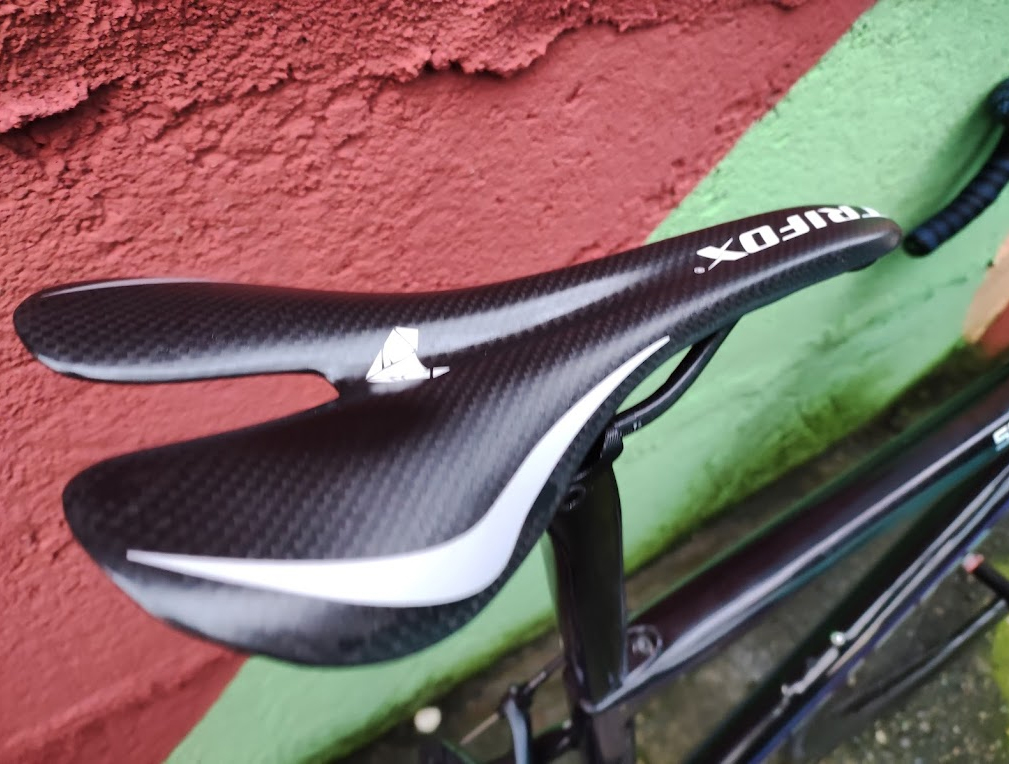
One of the most critical components of a bicycle that directly affects your comfort on long rides is the bicycle saddle. The right saddle can make all the difference between a smooth, enjoyable cycling experience and an uncomfortable, painful one. If you’re spending hours in the saddle, you’ll quickly notice how crucial comfort is. However, with so many options available, how do you find the most comfortable bicycle saddle for your specific needs? 1. Consider Your Riding Style First and foremost, your saddle choice should align with the type of cycling you do. Different cycling disciplines demand different saddle features: Road Cycling: For long rides and high-performance cycling, a road saddle is typically narrower with a lightweight design. It supports an aggressive riding position, focusing on aerodynamics and minimal friction. Mountain Biking (MTB): MTB saddles are generally wider and more padded, offering extra comfort for off-road terrain. These are designed to handle rough trails and provide support when cycling through challenging landscapes. Commuting or Casual Cycling: If you’re cycling for leisure or commuting, a saddle with more padding and a comfortable design will help you ride longer distances without discomfort. Understanding your riding style is crucial to picking the right saddle, as each type offers distinct features that cater to your specific needs. 2. Evaluate Saddle Shape and Width Saddle shape is vital in ensuring proper support. The most important factor here is your sit bones—the bony parts of your pelvis that make contact with the saddle. A saddle that’s too narrow or too wide can create pressure points, leading to discomfort. Wide Saddles: These are better suited for people with wider sit bones or those riding in a more upright position. Narrow Saddles: These are ideal for riders with narrower sit bones or those who ride in a more aggressive, forward-leaning position. When selecting a saddle, try to get an accurate measurement of your sit bones, either by visiting a bike shop or using an online guide to determine the appropriate width. Many high-quality saddles come in various widths to suit different body types. 3. Choose the Right Padding and Material While cushioning is important, more padding doesn’t always equate to more comfort. Too much padding can lead to chafing and discomfort, especially if you’re cycling for long periods. Instead, look for padding that’s dense but comfortable, and made of materials that allow air circulation to reduce sweat and heat buildup. Gel Padding: Offers excellent comfort and shock absorption. Ideal for short to medium-distance rides. Foam Padding: More common in performance-oriented saddles. It’s lightweight and provides sufficient comfort while avoiding the bulk of thicker gel inserts. Carbon Fiber or Synthetic Materials: High-performance saddles often use carbon fiber or lightweight composites for strength, durability, and minimal weight. The Trifox Carbon Bike Saddle is a perfect example of this. Combining lightweight carbon with memory foam padding, it offers the right balance of comfort and performance, ensuring a smooth ride over long distances while keeping the overall bike weight low. 4. Test Different Options When shopping for a saddle, comfort is key. If possible, visit a bike shop that allows you to test ride different saddles. Test them on your bike, ride for a few miles, and pay attention to how your body feels. Some bike shops also have saddle fitting services that can help you select the right saddle based on your anatomy and riding style. For a quick but effective way to narrow down your options, consider the Trifox Carbon Bike Saddle, which offers an ergonomic design that conforms to your body shape, providing excellent comfort without compromising performance. 5. Look for Durability and Quality Comfort is crucial, but durability matters just as much. A high-quality saddle will last longer, hold up to daily use, and maintain its shape and comfort over time. Look for saddles that are well-constructed with strong materials like carbon fiber, titanium, or stainless steel rails, as they offer better durability and weight savings. The Trifox Carbon Bike Saddle is engineered to be both durable and lightweight, featuring a carbon fiber base and high-quality cover materials designed to withstand long hours of cycling without losing shape. Finding the most comfortable bicycle saddle is essential for improving your ride experience. Consider your riding style, saddle shape, width, padding, and materials when making your choice. Testing different saddles is also a great way to find what works best for you. For riders looking for high-performance comfort, the Trifox Carbon Bike Saddle is a great option, combining lightweight carbon with memory foam for the perfect balance of comfort and durability. By selecting the right saddle, you'll not only enhance your comfort but also improve your cycling performance, making every ride more enjoyable.
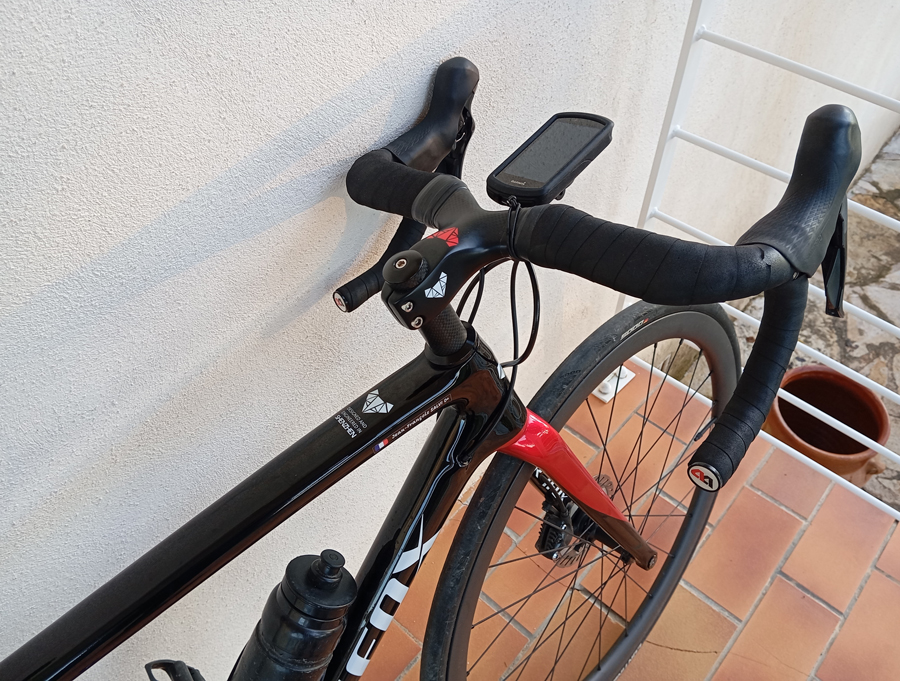
When it comes to cycling, comfort is key. Whether you’re a commuter, a weekend warrior, or a competitive rider, the quality of your ride often depends on the gear you’re using. Among the many upgrades available to cyclists, shock absorption handlebars have gained popularity for their ability to enhance the overall riding experience. These handlebars are designed to reduce the impact of road vibrations and bumps, providing a smoother and more comfortable ride. In this blog post, we’ll explore how shock absorption handlebars, like the integrated carbon drop handlebar with stem DHB500 from Trifox, can improve your cycling experience. 1. Reduced Fatigue from Vibration One of the most noticeable benefits of shock absorption handlebars is their ability to reduce the amount of vibration transmitted from the road to your hands, arms, and shoulders. Traditional handlebars, especially on rigid frames or road bikes, can transfer a lot of shock from rough roads or gravel surfaces directly to the rider. Over time, this can lead to hand numbness, arm fatigue, and overall discomfort. Shock absorption handlebars, such as the DHB500, are engineered with materials like carbon fiber that help dampen these vibrations. Carbon fiber’s natural flexibility allows it to absorb much of the harsh impacts, significantly reducing the stress on your body. This results in less fatigue during long rides and a more pleasant experience, even on bumpy terrain. 2. Increased Comfort and Control In addition to absorbing vibrations, shock-absorbing handlebars can enhance your overall comfort and control on the bike. With reduced hand strain and arm fatigue, you’ll be able to maintain a firmer grip on the handlebars for longer periods. This leads to improved control over your bike, especially in technical riding conditions or while navigating tight turns. The DHB500 handlebars, with their integrated stem design, offer a sleek, aerodynamic setup that also provides a more natural riding position. The ergonomic design supports a better body posture, allowing you to ride for hours without experiencing the discomfort that typically comes from prolonged pressure on your hands and wrists. 3. Enhanced Durability and Longevity When it comes to cycling components, durability is essential. Shock absorption handlebars are typically constructed from high-quality materials like carbon fiber, which not only provides shock absorption but also contributes to the overall strength and longevity of the handlebars. The DHB500 handlebars, for example, feature an integrated stem that reduces the number of joints and potential weak points in the system. This results in a more robust setup that is less prone to wear and tear. Additionally, the reduction in road vibrations can help preserve the longevity of other components on your bike, including your wheels and fork. Less shock transfer means your bike’s parts will experience less stress, leading to fewer repairs and a longer lifespan for your bike. 4. Sleek, Modern Aesthetic Apart from their performance benefits, shock absorption handlebars like the DHB500 can also contribute to a bike’s overall aesthetic. With their sleek, integrated design, they not only offer superior functionality but also add to the modern, streamlined look of your bike. This is especially appealing for riders who appreciate both form and function. Shock absorption handlebars like the Trifox DHB500 are a game-changer for cyclists who want to improve their ride quality, comfort, and control. By reducing vibrations, increasing comfort, and enhancing durability, these handlebars allow you to ride longer and with greater ease. Whether you're tackling rough roads or just looking for a more enjoyable commute, shock absorption handlebars can make a noticeable difference in your cycling experience.

When it comes to road biking, comfort and speed are two of the most sought-after qualities. Whether you're racing through city streets or embarking on long-distance rides, the way your bike absorbs vibrations from the road can have a significant impact on both your comfort and performance. Vibration-absorbing road bikes, particularly those made from advanced materials like carbon fiber, offer a unique advantage in this area. But how exactly do they enhance your ride? Let's break it down, focusing on bikes like the Trifox Carbon Fiber Road Bicycle Ultra Light SF-QR-20. 1. Reducing Fatigue for Longer Rides One of the most noticeable benefits of a vibration-absorbing road bike is reduced fatigue. When riding on rough or uneven surfaces, the constant vibrations travel through the bike frame and into your body. Over time, these vibrations can lead to discomfort and muscle fatigue, especially on longer rides. This is particularly true for cyclists who ride for extended hours or on roads that aren't perfectly smooth. The Trifox Carbon Fiber Road Bicycle Ultra Light SF-QR-20 is equipped with a carbon fiber frame that naturally absorbs and dampens road vibrations. Carbon fiber has a unique ability to flex and absorb shock, which helps to reduce the impact forces transmitted to the rider. This results in less strain on your arms, legs, and back, allowing you to ride for longer periods without feeling worn out. Whether you’re training for a race or enjoying a leisurely ride, a vibration-absorbing bike keeps you comfortable, allowing you to push further without the nagging aches that can derail your ride. 2. Enhanced Comfort on Rough Roads While many road cyclists dream of smooth, pristine pavement, the reality is that most of us will encounter rough patches, cracks, and uneven road surfaces. A traditional road bike without vibration-damping technology might transfer these bumps directly to your body, resulting in a jolting ride that can quickly become uncomfortable. The Trifox SF-QR-20 addresses this issue with its carbon fiber construction, designed specifically to reduce vibrations without sacrificing stiffness or performance. The material’s natural ability to absorb shocks means that even when you’re riding on less-than-ideal surfaces, you’ll experience a smoother, more enjoyable ride. This level of comfort allows cyclists to focus on their technique and performance rather than being distracted by discomfort, making the bike ideal for those who ride on a variety of road conditions. 3. Improved Handling and Control A bike that absorbs road vibrations doesn’t just provide comfort—it also improves handling and control. Vibrations from the road can cause your hands and arms to feel fatigued, which reduces your ability to hold the handlebars with a steady grip. This can be especially problematic during high-speed descents or sharp turns, where precise handling is essential. With a vibration-absorbing road bike like the Trifox Carbon Fiber Road Bicycle, the reduced vibrations lead to better control of the bike. The smoother ride allows for a firmer grip on the handlebars, improving your ability to maintain stability, even in challenging conditions. Whether you’re maneuvering through a tight corner or descending at high speed, the bike’s ability to reduce vibrations keeps you connected to the road, giving you more confidence and control. 4. Increased Speed with Less Effort While comfort and control are crucial, speed is the ultimate goal for many road cyclists. A smoother ride means you can exert less energy fighting the effects of road vibrations, allowing you to conserve more strength for pedaling and acceleration. The result? More efficient riding and the ability to maintain a faster pace with less effort. Carbon fiber frames, like those on the Trifox SF-QR-20, are not only lightweight but also designed to flex in a way that maximizes energy transfer. This means that the bike absorbs shocks without wasting energy, allowing you to ride faster and with less strain. By reducing fatigue and increasing comfort, vibration-absorbing bikes make it easier to push your limits, whether you're racing or enjoying a fast-paced ride on your local roads. 5. Long-Term Health Benefits Consistent exposure to high-impact vibrations can also lead to long-term physical issues, particularly for cyclists who ride frequently. Repeated shocks to the body can cause discomfort in the joints, wrists, and spine, potentially leading to injuries over time. Vibration-absorbing bikes, such as the Trifox Carbon Fiber Road Bicycle Ultra Light SF-QR-20, are designed to minimize these impacts, providing long-term health benefits. By reducing the strain on your body, these bikes help prevent injury and ensure that you can continue riding for years to come. Conclusion A vibration-absorbing road bike like the Trifox Carbon Fiber Road Bicycle Ultra Light SF-QR-20 offers significant advantages in terms of both comfort and performance. By reducing road vibrations, these bikes allow cyclists to ride longer with less fatigue, improve their control and handling, and maintain a faster pace with greater efficiency. Whether you're a competitive racer or a casual rider, the enhanced comfort provided by a vibration-absorbing bike will help you enjoy your rides more and push your limits with greater ease. For cyclists looking to maximize both comfort and speed, investing in a bike with vibration-damping technology is a smart choice that will make every ride smoother, faster, and more enjoyable.
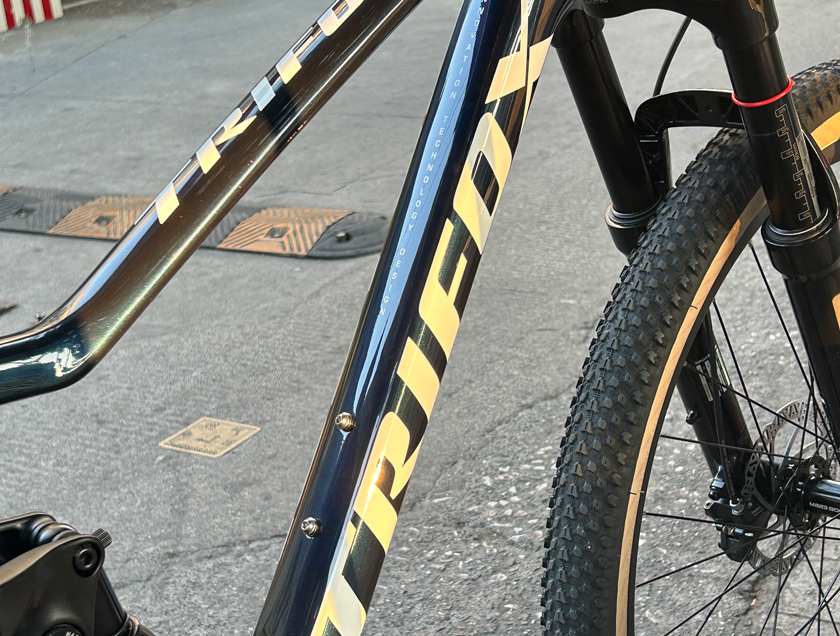
When it comes to mountain biking, especially for trail riders, choosing the right bike can make a world of difference. One of the most debated decisions among cyclists is whether to opt for a dual suspension bike or stick with a hardtail. Dual suspension bikes, which feature both front and rear shocks, are known for their ability to absorb impacts and provide a smoother ride on rough terrain. However, they come with a higher price tag and more maintenance. So, are dual suspension bikes really worth the investment for trail riders? Let’s break it down. 1. Superior Comfort on Rough Terrain One of the most obvious advantages of dual suspension bikes is the comfort they provide. Trail riding often involves navigating rocky paths, bumpy trails, and obstacles that can create significant jolts and impacts. Hardtail bikes, which only have a suspension fork at the front, can transfer a lot of that shock directly to the rider, leading to discomfort, fatigue, and a less enjoyable ride. Dual suspension bikes, like the Trifox Pioneer Bike, are equipped with both front and rear shocks that work together to absorb impact. This creates a much smoother ride, allowing you to handle rough terrain with greater ease. The rear suspension helps to absorb shocks from bumps and drops, making the ride more comfortable and reducing the risk of injury from jarring impacts. For trail riders who often encounter technical terrain or prefer longer rides, the added comfort of dual suspension can be a game-changer. 2. Better Control and Handling Dual suspension bikes also offer superior control and handling compared to hardtails, especially on downhill and technical sections of the trail. The rear suspension helps to keep the rear wheel planted on the ground, improving traction and stability. This is particularly important when navigating loose gravel, wet conditions, or steep descents, where maintaining control is crucial. The Trifox Pioneer Bike is designed with a robust dual suspension system that enhances handling, even in challenging conditions. The bike’s front and rear shocks work in unison to maintain tire contact with the ground, providing more consistent traction and allowing you to tackle technical sections with confidence. Whether you’re navigating tight switchbacks or blasting down a rocky descent, the improved stability and control that come with dual suspension can make a noticeable difference in your performance. 3. Reduced Fatigue on Long Rides Riding on rough terrain can be exhausting, particularly on long rides. The constant jarring and bouncing of a hardtail bike can take a toll on your body, leading to fatigue and discomfort. On the other hand, dual suspension bikes reduce the impact forces that travel through your body, making the ride less taxing. This is especially beneficial for trail riders who enjoy longer rides or multi-day adventures. The Trifox Pioneer Bike offers excellent suspension performance that helps reduce the strain on your arms, legs, and back. With the rear suspension absorbing much of the shock, riders can focus on the ride itself rather than worrying about fatigue or discomfort. If you’re planning on tackling challenging trails or going for long-distance rides, the added comfort and reduced fatigue provided by dual suspension will allow you to ride longer and harder without burning out. 4. Increased Safety and Confidence A well-designed dual suspension system can also increase your safety on the trails. By providing better traction, stability, and control, these bikes help riders stay in control during high-speed descents, technical maneuvers, and challenging terrain. When you’re riding on a bike that feels stable and secure, you’re more likely to take on challenging obstacles with confidence. The Trifox Pioneer Bike is equipped with advanced suspension technology that enhances both safety and performance. Whether you’re descending a steep hill or negotiating an uneven rock garden, the bike’s suspension keeps you in control and minimizes the risk of losing traction or control. This makes dual suspension bikes an excellent choice for riders who enjoy pushing their limits and tackling more advanced trail features. 5. The Cost vs. Benefits Debate Of course, dual suspension bikes come with a higher price tag compared to hardtails. The additional cost is typically due to the more complex suspension systems, higher-quality components, and additional maintenance required. For some riders, especially those just starting out or those who primarily ride smooth trails, a hardtail might offer all the performance they need at a more affordable price. However, for serious trail riders who often ride on rough, technical trails, the benefits of a dual suspension bike are hard to ignore. The increased comfort, better control, and reduced fatigue make the higher investment well worth it for riders who want to maximize their performance and enjoy a smoother, more enjoyable ride. So, are dual suspension bikes really worth the investment for trail riders? The answer largely depends on the type of riding you do and your priorities as a cyclist. If you regularly ride on rough, technical terrain or enjoy long-distance trail rides, a dual suspension bike like the Trifox Pioneer Bike can significantly improve your ride quality, comfort, and performance. While they do come with a higher price tag, the added benefits of better control, reduced fatigue, and increased safety make them an excellent choice for serious trail riders who want to take their biking experience to the next level.
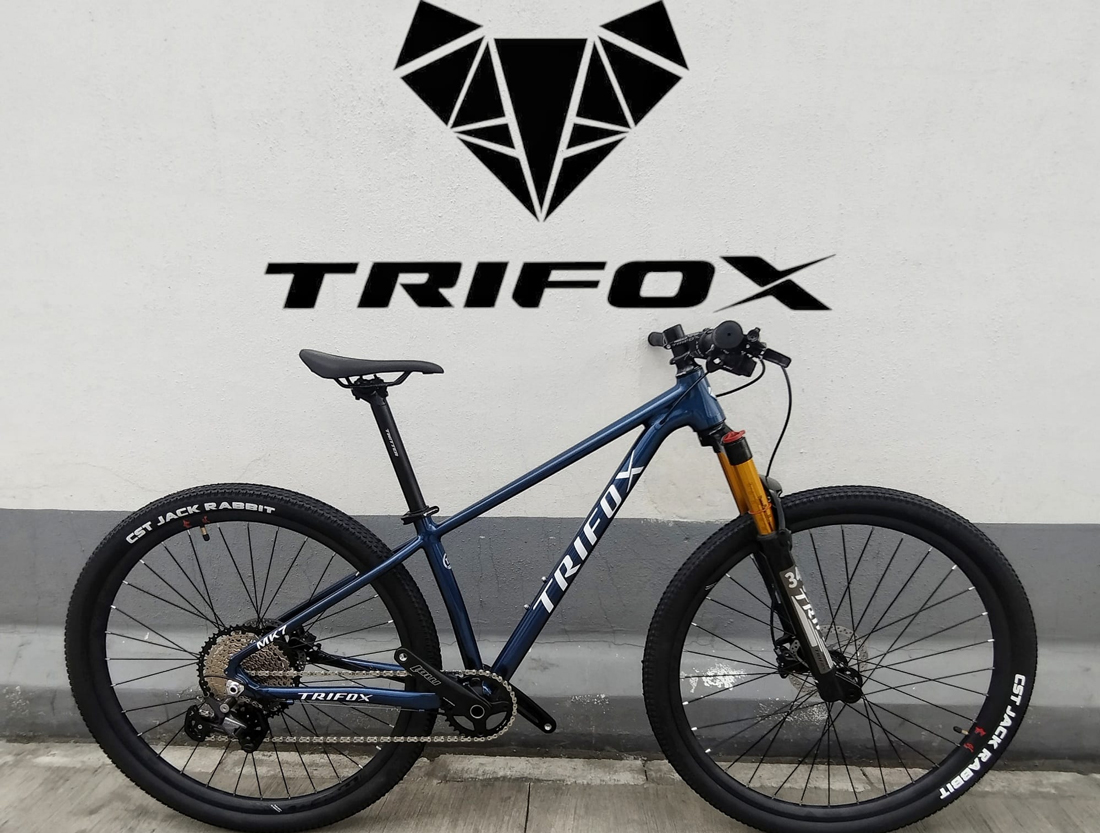
When it comes to mountain biking, durability is just as important as speed, agility, and comfort. One aspect of durability that often gets overlooked is the frame’s deformation resistance. Deformation resistance refers to a bike’s ability to withstand stress, pressure, and impact without losing its shape or structural integrity. For serious riders, especially those tackling rugged terrain or high-intensity trails, a higher deformation resistance bike is essential. But why exactly does this matter for riders? 1. Increased Durability and Longevity The primary benefit of a bike with higher deformation resistance is enhanced durability. Mountain bikes are put through a lot of stress, whether it’s from rough trails, jumps, or technical sections. Frames that lack sufficient deformation resistance are more likely to bend, crack, or break under pressure. This compromises the bike’s performance and can lead to costly repairs or the need for a full replacement. The Trifox Aluminum Mountain PeakTrail Xtreme MK7 Bike is a great example of a bike designed with higher deformation resistance. Its frame is made from premium aluminum alloy, a material known for its strength and ability to withstand heavy loads. Aluminum can handle significant stress without permanently deforming, making it an excellent choice for riders who regularly push their bikes to the limit. For mountain bikers who enjoy aggressive riding, this added resistance ensures that the frame remains intact, ride after ride. 2. Improved Safety on the Trail A frame with higher deformation resistance is not only about performance; it’s also about safety. When a bike frame deforms or weakens over time, it can compromise the overall stability and safety of the bike. For example, a bent or cracked frame may affect your bike’s handling, making it more difficult to control, especially during fast descents or sharp turns. In extreme cases, a damaged frame could lead to a failure, which is dangerous for the rider. With a bike like the Trifox MK7, which features superior deformation resistance, riders can feel confident knowing that their bike can handle rough terrain without compromising their safety. The sturdy frame is built to absorb impacts and resist deformation, ensuring that the rider stays in control, even in the most demanding conditions. 3. Better Performance on Rugged Terrain Mountain biking often involves riding over rocks, roots, and uneven surfaces that put a significant amount of pressure on the frame. A bike with low deformation resistance can struggle to maintain performance on these types of trails. Over time, constant impacts and stresses can cause the frame to warp, reducing the bike’s overall efficiency and handling. A bike like the Trifox Aluminum Mountain PeakTrail Xtreme MK7 is designed to handle these kinds of challenges. With its high deformation resistance, the frame stays true to its form, allowing for better handling and control on rugged trails. Whether you’re navigating rocky terrain, jumping over obstacles, or riding through muddy paths, the bike’s frame integrity ensures a smooth, stable ride. 4. Maintaining Frame Geometry Frame geometry is crucial to a bike’s overall handling and performance. If the frame starts to deform under stress, it can alter the bike’s geometry, negatively affecting the way it rides. For example, the angles of the head tube, seat tube, and bottom bracket can shift, leading to changes in how the bike handles turns, descents, and climbs. This is especially problematic for riders who demand precision and control, whether they’re racing or navigating technical trails. A bike with higher deformation resistance, like the Trifox MK7, maintains its frame geometry even after continuous stress. This ensures that the bike continues to handle as designed, providing a consistent and reliable ride throughout its lifespan. For serious riders, maintaining the bike’s geometry is crucial for peak performance. 5. Cost-Effective in the Long Run While bikes with higher deformation resistance may cost more upfront, they are often more cost-effective in the long term. The durability of the frame means that riders won’t need to replace their bike as often due to damage or wear and tear. This can save a significant amount of money on repairs, replacements, and maintenance over time. The Trifox Aluminum Mountain PeakTrail Xtreme MK7 is an investment that offers long-term value. The frame's resistance to deformation ensures that it holds up over countless rides, maintaining both its structural integrity and performance. For riders who put their bikes through tough conditions, this durability can be well worth the price. A higher deformation resistance bike is essential for serious riders who demand durability, safety, and performance. Bikes like the Trifox Aluminum Mountain PeakTrail Xtreme MK7 are designed to withstand the stresses of aggressive riding, ensuring a long lifespan, stable handling, and consistent performance. Whether you're tackling rugged trails or navigating challenging terrain, a bike with superior deformation resistance will give you the confidence and reliability you need for a safe and enjoyable ride. For any rider serious about pushing their limits, investing in a bike with high deformation resistance is a smart choice that will pay off in the long run.

















